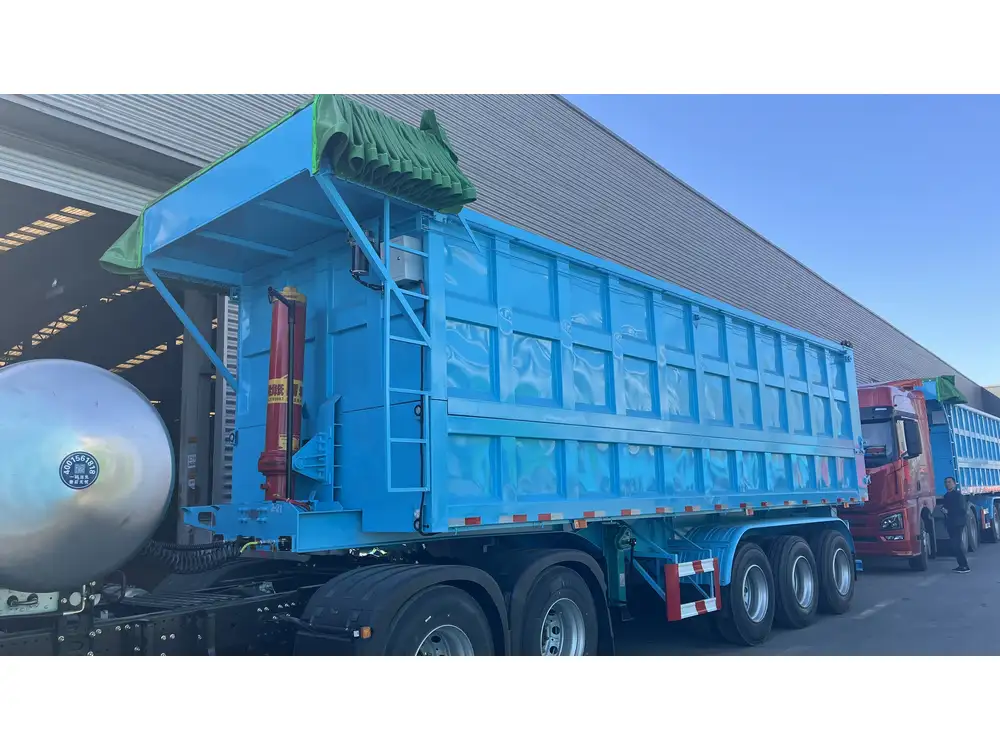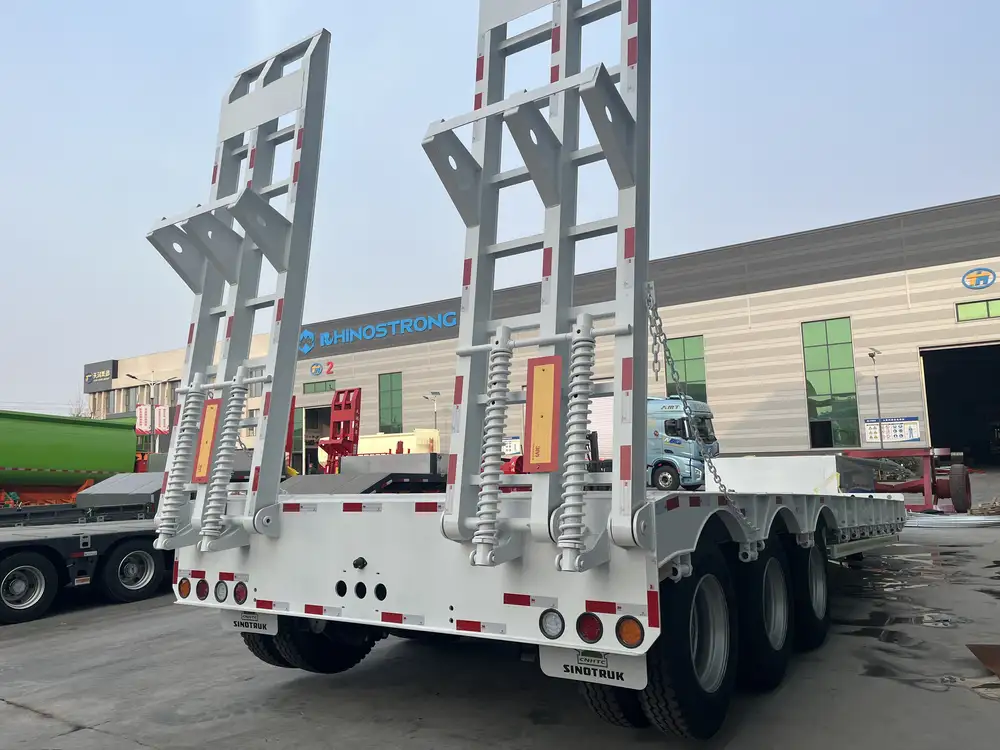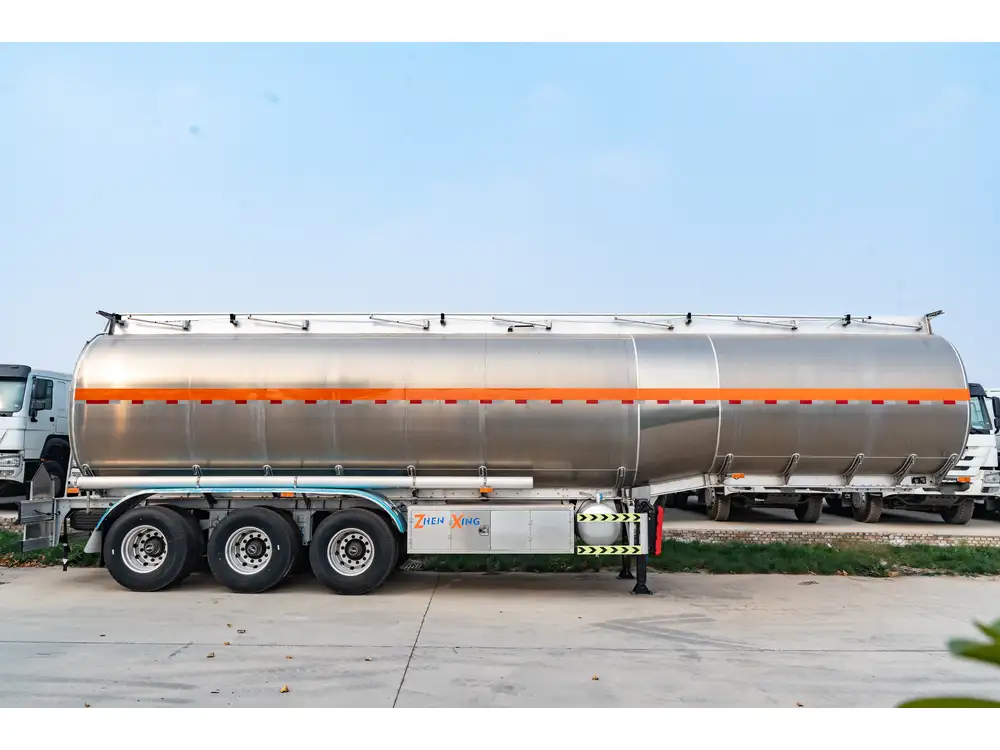Dump trailers have become an indispensable tool in the world of construction, landscaping, and waste management. Their versatility and efficiency make them a popular choice among contractors and DIY enthusiasts alike. One prevailing question that arises when considering the purchase or rental of a dump trailer is: how many yards does a dump trailer hold? This article aims to provide a comprehensive understanding of dump trailers, their capacities, and the factors that influence how much material they can transport.
What is a Dump Trailer?
Dump trailers are specialized trailers equipped with a hydraulic lifting mechanism that allows them to tilt and unload their contents. Unlike traditional trailers, the design and functionality of dump trailers are optimized for the quick and efficient unloading of materials. They are commonly used to haul gravel, dirt, sand, debris, and various construction materials, making them essential in many projects.
Key Features of Dump Trailers
- Hydraulic Lift System: This system allows the trailer bed to elevate, facilitating the rapid unloading of materials.
- Robust Build: Dump trailers are constructed from heavy-duty materials designed to withstand rough usage.
- Variety of Sizes: Available in various sizes from small to large, accommodating different material capacities.
- Versatile Towing Options: Most dump trailers can be towed by a range of vehicles, including trucks and larger SUVs.

Factors Influencing Capacity
When discussing how many yards a dump trailer can hold, several critical factors come into play:
1. Trailer Size
Dump trailers come in a myriad of sizes, typically ranging from 5 to 20 cubic yards. The bed dimensions—length, width, and height—determine the volume of material they can carry.
| Size | Capacity (Cubic Yards) | Common Uses |
|---|---|---|
| Small (5 yd) | 5 yards | Small landscaping jobs, mulch |
| Medium (10 yd) | 10 yards | Residential renovations, gravel |
| Large (15 yd) | 15 yards | Commercial construction projects |
| Extra Large (20 yd) | 20 yards | Major site work, debris hauling |
2. Material Density
The type of material being transported affects the total load weight and how much of it can fit into the trailer. For instance, sand and gravel have different densities, thereby affecting how many cubic yards can be loaded safely.
| Material | Weight per Cubic Yard | Approx. Yards for 10,000 lbs |
|---|---|---|
| Sand | 2,700 lbs | 3.7 yards |
| Gravel | 2,000 lbs | 5 yards |
| Soil | 1,500 lbs | 6.7 yards |
| Mulch | 600 lbs | 16.7 yards |

3. Legal Weight Limits
When assessing how many yards a dump trailer can transport, it is essential to consider local weight limits imposed by road regulations. Many jurisdictions establish maximum weight allowances to ensure safety on public roads. Overloading a trailer may lead to fines or other legal repercussions.
| Trailer Type | Maximum Payload (lbs) | Standard Setup |
|---|---|---|
| 5 ft x 10 ft Dump Trailer | 3,000 lbs | Light-duty vehicles |
| 7 ft x 14 ft Dump Trailer | 7,000 lbs | Mid-size pickup trucks |
| 8 ft x 20 ft Dump Trailer | 14,000 lbs | Heavy-duty trucks |
Understanding Capacity in Practical Terms
Dump Trailer Capacities Compared
The volumetric capacity of dump trailers can range widely, and understanding this can be pivotal in choosing the right one for your needs. Below are some capacity visualizations and practical applications:
- 5-Yard Dump Trailer: Suitable for minor landscaping, such as mulching and small debris. It can carry approximately 3.7 yards of sand but may have a higher yield with lighter materials like mulch.
- 10-Yard Dump Trailer: Ideal for medium-sized jobs—think yard renovation or a small construction site—carrying up to 5 yards of gravel efficiently.
- 15-Yard Dump Trailer: This is a workhorse for larger construction projects, capable of transporting heavy loads, such as 10 yards of soil or 7.5 yards of gravel.
- 20-Yard Dump Trailer: Perfect for demolition debris or large landscaping projects. It can handle around 14 yards of heavy material.

Calculating Load Capacity
When planning a project, it’s crucial to calculate the expected load accurately. Here’s a straightforward formula to calculate the approximate capacity after factoring in material density:
*Total Capacity (cubic yards) = (Trailer Volume in yards) (Weight of Load in lbs) ÷ (Weight Capacity of Trailer in lbs)**
For example, if you have a 10-yard trailer and wish to calculate the capacity for gravel, which weighs approximately 2,000 lbs per cubic yard, then:
- Total Weight for 10 yards: 10 x 2,000 lbs = 20,000 lbs.
- Compare this weight against your trailer’s legal weight limits to ensure you can transport it safely.
Best Practices for Loading and Unloading
To maximize the efficiency of a dump trailer, adhere to these best practices:
Even Distribution: Ensure that the load is evenly distributed within the trailer to maintain stability while towing.
Don’t Overload: Stay below the maximum weight rating for your trailer to avoid consequences related to safety and legal regulations.
Proper Securing of Loads: Ensure that loose materials are secured correctly to avoid spillage during transport.
Gradual Unloading: When unloading, allow the trailer to tilt gradually to prevent material from spilling over uncontrollably.
Frequently Asked Questions (FAQs)

1. What are the most common materials transported by dump trailers?
Dump trailers are commonly used for transporting various materials, including soil, gravel, sand, asphalt, and demolition debris. Each material has different density ratings, directly affecting capacity.
2. Is a dump trailer better than a dump truck for small jobs?
For residential jobs that require less material transport, a dump trailer is often more practical due to its easier maneuverability and typically lower cost.
3. Can I tow a dump trailer with a standard pickup truck?
Most light-duty pickup trucks can safely tow smaller dump trailers; however, always verify the truck’s towing capacity against the trailer specifications.

4. How do I choose the right dump trailer for my needs?
Assess the volume and types of materials you will be transporting, consider your towing capacity, and research local regulations regarding weight limits to find the appropriate size.
5. Where can I view pricing for different dump trailers?
Several online marketplaces and local dealers offer pricing and specifications for dump trailers. Major manufacturers often have websites that provide detailed catalogs and resources for potential buyers.
Conclusion
Understanding the capacities of dump trailers is quintessential for optimizing performance on your projects. By considering factors such as the size of the trailer, the density of the materials, and local weight regulations, you can make informed decisions to ensure your operations run smoothly.
Whether you are a contractor tackling a large job or a homeowner embarking on a DIY project, selecting the right dump trailer can significantly affect the efficiency of your material transport needs. Embrace the versatility and functionality that dump trailers provide, and ensure that you operate within safety and legal parameters to get the job done effectively while maximizing value.



